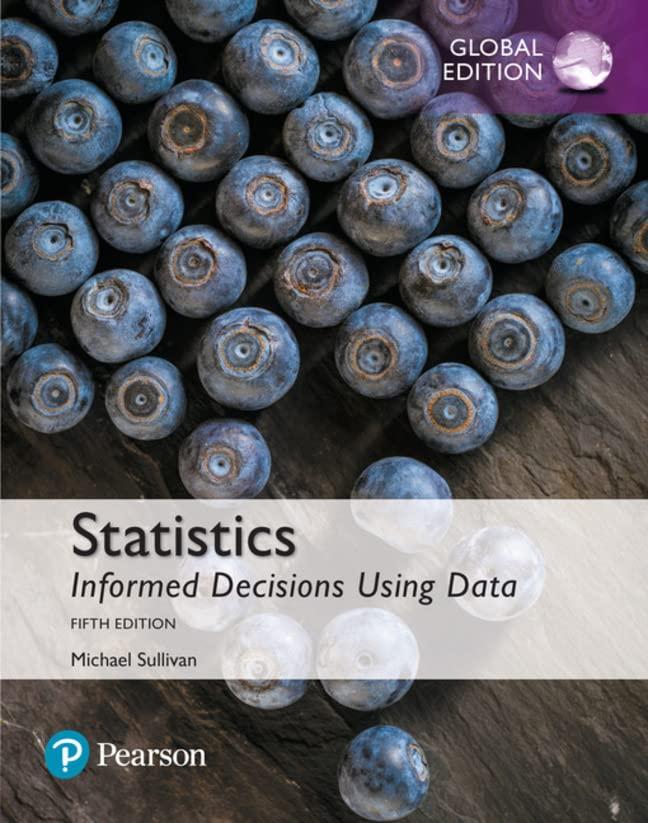In the Illinois Lottery, an urn contains balls numbered 152. From this urn, six balls are randomly
Question:
In the Illinois Lottery, an urn contains balls numbered 1–52. From this urn, six balls are randomly chosen without replacement. For a \($1\) bet, a player chooses two sets of six numbers. To win, all six numbers must match those chosen from the urn. The order in which the balls are picked does not matter. What is the probability of winning the lottery?
Approach The probability of winning is given by the number of ways a ticket could win divided by the size of the sample space. Each ticket has two sets of six numbers and therefore two chances of winning. The size of the sample space S is the number of ways 6 objects can be selected from 52 objects without replacement and without regard to order, so N(S) = 52C6.
Step by Step Answer:

Statistics Informed Decisions Using Data
ISBN: 9781292157115
5th Global Edition
Authors: Michael Sullivan





